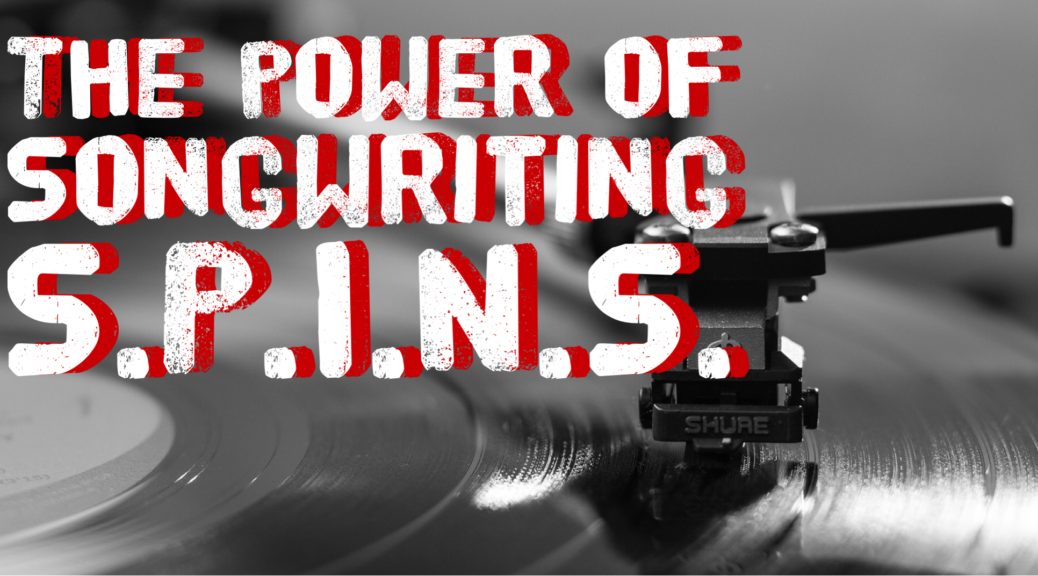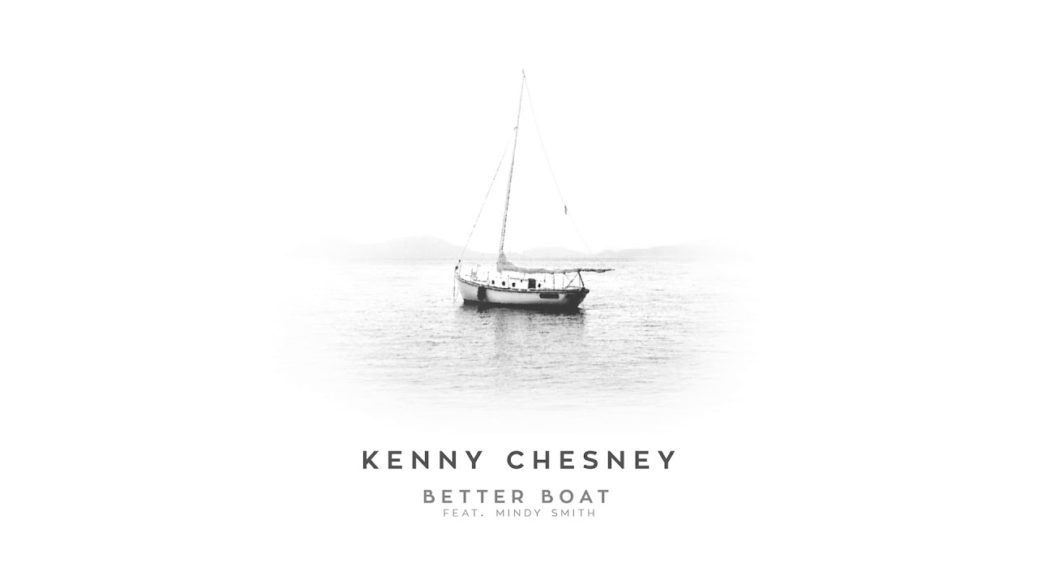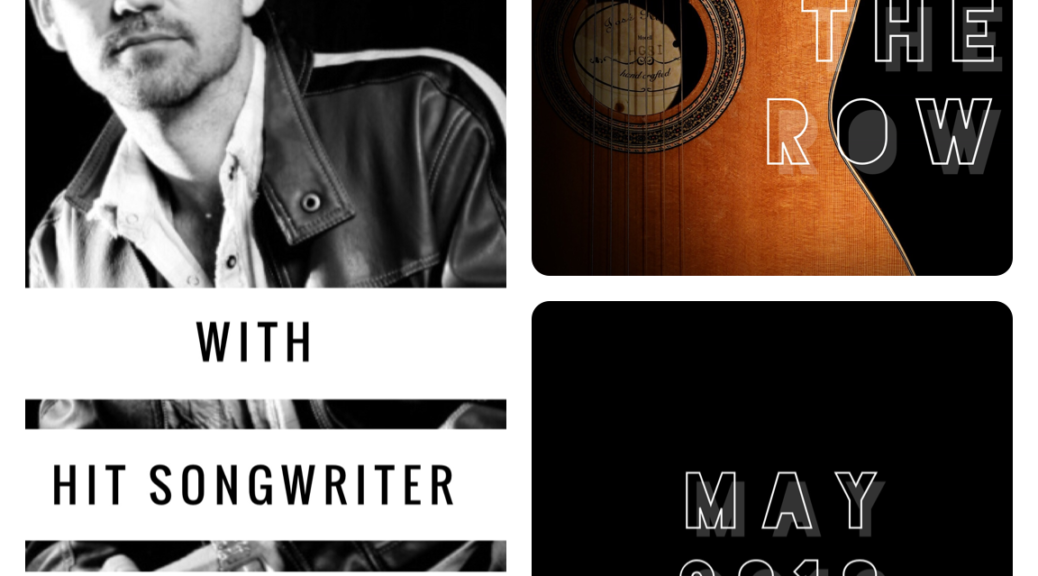Want to make a living as a songwriter? Want a publishing deal? Would you be happy just to get a song or two recorded, even if they don’t become hit singles? The answer for all this is the same...
If you want artists to record your music, write songs with built-in S.P.I.N.S.
So, what are S.P.I.N.S., and how do they help you get cuts? Read on.
________________________________
To BE a pro, you need to THINK like a pro, and this FREE ebook will help transform your thinking, your songwriting, and your success. Get it today!
_________________________________
These days, it seems like it’s harder than ever to land a cut on a major artist. There are literally tens of thousands of songwriters in Nashville trying to get one of their songs recorded by a handful of major artists. And that’s not counting the thousands of songwriters in other major music cities and small towns around the world who are competing for cuts on those same records.
But the competition (and opportunity) doesn’t stop there. A quick check of any online music platform will reveal that there are thousands of independent artists who are releasing new music every day. How do you get a song on one of their projects?
You get cuts by writing songs with S.P.I.N.S. (You know how much I love acronyms.) Let’s break it down.
S. is for Stickiness.
Your song has to get stuck in the listener’s head. It has to be memorable- to stick with the listener. You can do this multiple ways. A great way to start is by having a unique, compelling hook or title. Avoid titles that have been done a million times. “I Love You.” “Over You.” Those titles aren’t going to send any publisher, producer or artist scrambling to hear your song. Be more creative and more memorable.

Have melodic hooks in your song that are ear-worms. There have to be some melodic pieces that stand out and stay with the listener after the first listen. If a listener can sing along by the time you hit your last chorus, that’s a great sign.
Imagery is a great way to be sticky. Give the listener something to see in their mind’s eye, something fresh, real and unexpected, and there’s a much better chance the song will be memorable.
P. is for Positioning.
Your song should be well-positioned for your target market. It has to make sense for your target genre and its artists. Your “I’m a whiskey-drinking, fist-swinging rebel” song is not going to work for an artist who is positioned as a “lover, not a fighter.”
Also, it helps to write songs that are artist-friendly. Do your songs make the artist look good? Do they say what an artist wants to say to their audience? That’s being artist-friendly.
If you song is sticky, but it’s not well-positioned, an artist isn’t going to record it.

I. is for Impact.
Your song needs to make an impact on the artist and listener. It should make them feel something. Does your song make the listener want to laugh, cry, dance or think? Will a large audience care about your song’s subject matter ? This is called being “universal.”
Start by having a clear emotional goal for your song. Is your song all about getting the listener on the dance floor, on their knees praying, on the phone with mama, or on their boyfriend? If you don’t know the response you want to get from the listener, you’re probably not going to get it.
Write about something emotional. It’s not enough for your song to be based around an interesting turn of phrase. The song must impact the listener’s emotions.

Keep it simple. Make your song about one clear thing. If you throw too much at the listener, you’ll confuse them. If you confuse the listener, you lose the listener, and they won’t be emotionally moved by your song. Keeping it simple also helps it be more sticky.
Use powerful imagery. It’s a great way to bring the listener into the story and keep their attention.
It doesn’t matter if your song is sticky and well-positioned if it has no impact on the listener.
N. is for Network.
You and your song have to get connected to the right people. This is where relationships are key. Can you get your songs to a legit publisher- who can then get the song in the right hands? Can you play your songs for a producer? Are you writing with the artist?Building and leveraging your network is the major difference between great songwriters and great songwriters with great careers.
Your song can be sticky, have positioning and impact, but it’ll never get recorded if it isn’t networked.

S. is for Start Again.
One song written with S.P.I.N.S. isn’t going to be enough. S.P.I.N.S. isn’t a guarantee. And even if it were, one song doesn’t make a career. But the more songs you write with built-in Stickyness, Positioning, Impact and Networking, the better your chance for songwriting success.
S.P.I.N.S. : Stickiness – Positioning – Impact – Network – Start Again
If you want to write songs with S.P.I.N.S. and get your songs recorded by artists, I have a great opportunity coming up.
In the month of July, I’m hosting a transformative online songwriting event called, “Building A Hit: From Blank Page To Finished Lyric.” In this powerful 4-week online workshop, I reveal:
How to find great song ideas. Kill writers block and fill up that blank page again and again.
How to focus your ideas for maximum impact. Don’t waste any more great ideas by leaving them under-developed or confusing.
How to frame your idea for maximum commercial appeal. Having a great, compelling idea isn’t enough. You have to build your song in a way that an artist will want to sing it and an audience will want to hear it.
How to finish your song. Stop leaving your best ideas unfinished. Nobody loves a song they never hear, and a song that’s only 99% finished will never get recorded, never get on the radio, and never change your life.
If you want to join me on a journey that will help you think and write like a pro songwriter, click on the link below. Spots are limited for this event, and I only host it twice a year. Miss out, and it’s gone for another 6 months. Don’t delay. Transform your songwriting today..
DON’T MISS OUT- CLICK HERE TO TAKE ADVANTAGE OF THIS GREAT OPPORTUNITY.
God Bless and Enjoy the Journey,
Brent
Brent Baxter is a hit songwriter with cuts by Alan Jackson, Randy Travis, Lady Antebellum, Joe Nichols, Gord Bamford, Ruthie Collins, Ray Stevens, and more. He’s written a top 5 hit in the US, a #1 in Canada & a top 10 in Texas… so far. He also hosts a top-rated songwriting and music business podcast called, “The C.L.I.M.B.” which can be found on iTunes or your favorite podcast app.





























